Are your cutting boards becoming warped and unusable? Don’t worry – there are several simple and effective methods to fix a warped cutting board. Whether your wood boards have taken on water damage or are
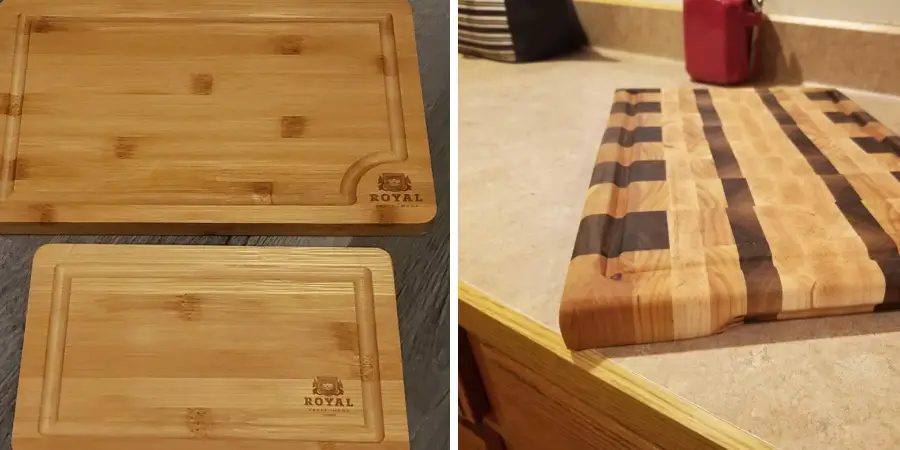
uneven from long-term usage, with patience, you can remove the warping from most wooden surfaces. In this blog post we’ll be exploring effective ways to restore your beloved cutting board back to its original condition so you can get back to chopping vegetables for dinner faster!
When you’re in the middle of a complex recipe, having to pause and deal with uncooperative kitchen tools can be incredibly frustrating. One tool that tends to misbehave the most is the cutting board. Whether it’s because too much moisture has been absorbed or there was uneven weight placed on its surface, warped cutting boards are an all-too-common problem that every home chef runs into. But don’t worry – with a few simple tips and tricks you can quickly figure out how to fix a warped cutting board so you can get back to cooking!
What Can Cause Problems in a Warped Cutting Board?
There are many reasons why a cutting board may become warped, including:
1. Exposure to Extreme Temperatures
One of the most common causes of warping in cutting boards is exposure to extreme temperatures, either hot or cold. For example, leaving a wooden cutting board too close to a stovetop can cause it to warp due to the intense heat. Likewise, exposing a cutting board to extremely cold temperatures can also cause warping.
2. Excessive Moisture
Excessive moisture can also cause warping in a cutting board. If the board gets wet and is not dried completely, it could warp over time due to the accumulation of water. This will ultimately cause the wood to expand and warp, making it difficult to use.
3. Improper Storage
Improper storage of a cutting board can also lead to warping. A cutting board should always be stored flat, as storing it in an upright position could cause it to warp due to the weight being unevenly distributed across the surface.
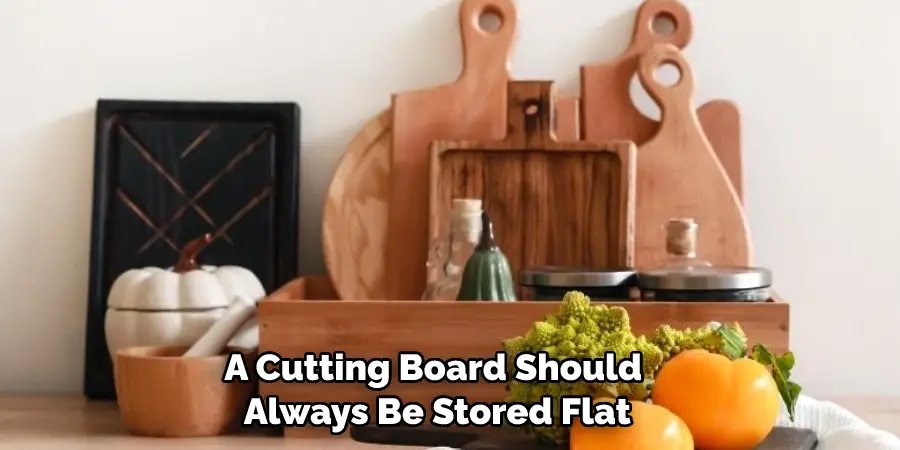
4. Improper Cleaning
Using harsh cleaning agents or not cleaning the board properly can also cause warping. Harsh chemicals can break down the fibers in the wood and make it more susceptible to warping, while improper drying of the board after washing can lead to excessive moisture buildup which could warp the board.
5. Poor Quality Materials
Finally, using poor quality materials can cause warping in a cutting board. It is important to choose a cutting board made from high-quality materials that will be able to withstand the rigors of regular use without warping.
6. Age
Over time, a cutting board can become warped due to age and normal wear and tear. Old, worn-out cutting boards may need to be replaced with new ones in order to avoid warping. Also, cutting boards that have been left out in the sun or exposed to excessive moisture may become warped over time.
In conclusion, there are several factors that can cause a cutting board to warp, including exposure to extreme temperatures, excessive moisture, improper storage, improper cleaning methods and poor quality materials. Additionally, age can also cause warping in a cutting board. It is important to take the necessary precautions to prevent warping and keep your cutting board in good condition.
12 Tips On How to Fix a Warped Cutting Board
1. Check the Knife Marks on the Cutting Board
This is the most common cause of warping – the deep knife marks create an uneven surface that can cause your cutting board to warp. Inspect the board closely and check if this is the issue. Also, make sure to use the right knife for cutting on the board and avoid using a serrated knife.
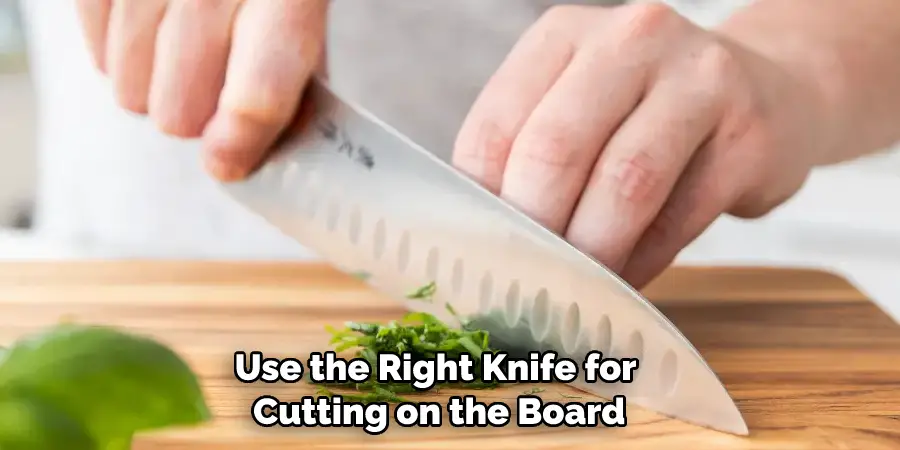
2. Use an Iron
Using an iron is one of the easiest ways to fix a warped cutting board. Place the board on a flat surface and place a damp towel over it. Turn your iron to low heat and gently press the board with it. You should see the warped part slowly flatten out.
3. Place Heavy Objects On It
Place heavy objects on the warped section of your cutting board to help flatten it out. Make sure that you don’t leave them there for too long or they can cause further warping. Also, use objects with a flat bottom so that it applies pressure evenly.
4. Use Wood Glue
Wood glue can help you fix a warped cutting board by gluing the edges of the board together to create an even surface. Apply a generous amount of wood glue along the edges and clamp them together for 30 minutes. Then, remove the clamps and let the board dry for 24 hours.
5. Put It in the Freezer
Putting your warped cutting board in the freezer is another simple way to fix it. Place it in a plastic bag and put it into your freezer for a few hours or overnight. Take out from the freezer and allow to thaw naturally before you use it.
6. Use a Planer
If your cutting board is severely warped, using a wood planer can help you to flatten it out. Make sure to put on all the necessary protective gear before you start the process and take your time while doing it. Also, make sure to follow the manufacturer’s instructions for safety.
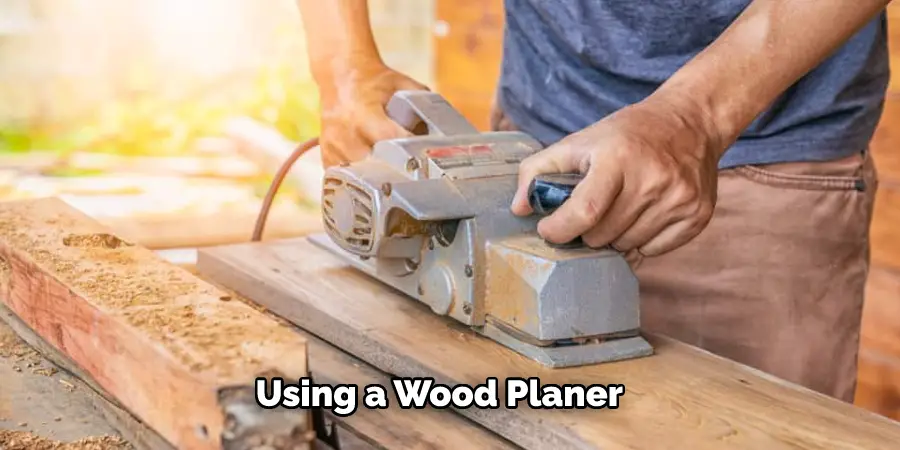
7. Use a Belt Sander
This is similar to using a planer but it involves more control and precision. Start off with a coarse grit sandpaper and slowly move on to finer grits until you get the desired results. Don’t forget to wear the necessary protective gear and make sure to keep the sander moving at all times.
8. Use a Hand Plane
A hand plane is used to level out surfaces of wood, making it ideal for flattening out warped cutting boards. Start off with a coarse grit and then move on to finer ones until you get the desired results. Make sure to wear the necessary protective gear and always keep the plane moving.
9. Use a Hot Water Soak
Soaking your cutting board in hot water can help to flatten it out. Avoid using boiling water as it can cause further warping of the wood. Leave the board submerged for about an hour or two before taking it out and letting it air dry.
10. Use a Router
Using a router is one of the most effective ways to flatten out a warped cutting board. It requires skill and precision, so make sure that you are comfortable with the process before you start. Wear all the necessary protective gear and follow the manufacturer’s instructions for safety.
11. Use a Jointer
This is similar to using a router but it has its own advantages and disadvantages. Make sure that you understand the process before starting, and always wear the necessary protective gear. Follow the manufacturer’s instructions for safety at all times.
12. Replace It If Necessary
If your cutting board is beyond repair, then the best option may be to replace it. Make sure that you dispose of it in a safe and responsible manner, such as recycling. If possible, try to reuse or repurpose the wood for another project.
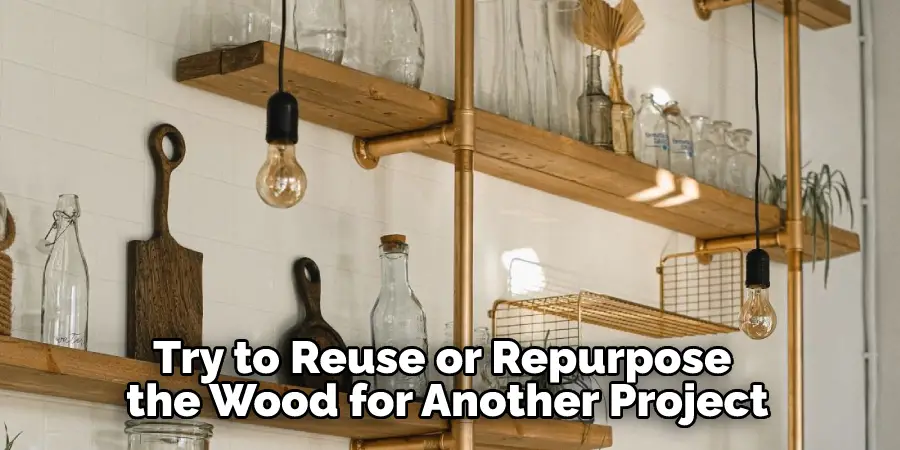
By following these steps, you can easily fix a warped cutting board and make it last for many years. Always keep safety in mind and make sure to wear the necessary protective gear when using power tools. With a little bit of patience and some elbow grease, you can have your cutting board looking as good as new.
Frequently Asked Questions
What Precautions Should Be Taken When Using a Warped Cutting Board?
When using a warped cutting board, it is important to be extra careful. Make sure boards are completely dry before placing food on them to avoid bacterial contamination and that the surface is not too slippery or uneven. Avoid using knives with sharp edges on warped cutting boards as they can easily slip off and cause injury. Finally, inspect the board regularly for any signs of warping or cracking.
How Can You Tell If a Cutting Board Is Warped?
A warped cutting board can be identified by its uneven shape and surface area. It will also often move or rock when placed on a flat surface. The edges may be curved or raised in some areas, and the surface will be uneven or slanted. Also, some areas may be slightly lower than the surrounding area.
What Causes a Cutting Board to Warp?
Cutting boards can warp due to regular use over time, changes in temperature and humidity, or exposure to water. The wood fibers are weakened by moisture and heat, causing the board to bend and twist out of shape. Improper storage can also contribute to warping.
Also, cutting boards that are not properly sealed can absorb moisture and become warped. You have to make sure that your cutting board has been sealed properly with a food-grade finish.
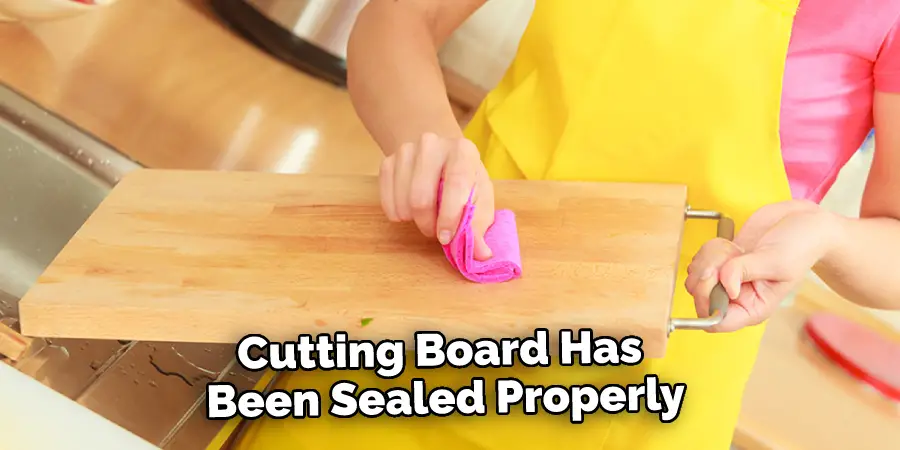
What Are Some Ways To Fix a Warped Cutting Board?
A warped cutting board can be fixed by using weights, clamps, and heat to press the board back into its original shape. This is normally done on both sides of the board for the best results. It is also important to seal the board with a food-grade finish after it has been fixed in order to protect it from warping again.
Alternatively, you could use an iron or a heat gun to reshape the board. Be sure to exercise caution when using these tools as they can be dangerous if not used properly.
Once a Cutting Board Is Warped, Is It Still Safe to Use?
Warped cutting boards can still be used, but it is important to take extra care when doing so. Make sure that the board is completely dry before placing food on it and avoid using knives with sharp edges as they can easily slip off and cause injury. Inspect the board regularly for any signs of warping or cracking. If the board is severely warped, it may be necessary to replace it in order to ensure safety and food hygiene.
How Can You Prevent It From Happening Again?
In order to prevent warping from happening again, it is important to properly store the cutting board. Make sure that the board is completely dry before storing and always store it away from sources of moisture or water.
Additionally, make sure to occasionally apply a food-grade finish to seal the board and prevent warping. Finally, use caution when placing sharp knives on the cutting board as they can easily cause damage. Also, inspect the board regularly for any signs of warping or cracking.
Overall, warped cutting boards can be a hazard and should be addressed as soon as possible. With proper care, maintenance, and storage, you can avoid having to fix your cutting board again in the future.
Conclusion
Now you know how to fix a warped cutting board and how to prevent it from happening again. With a little bit of patience and some elbow grease, you can restore your cutting board to its original shape in no time. Additionally, make sure to use caution when using sharp knives on the board and always store it away from sources of moisture or water.
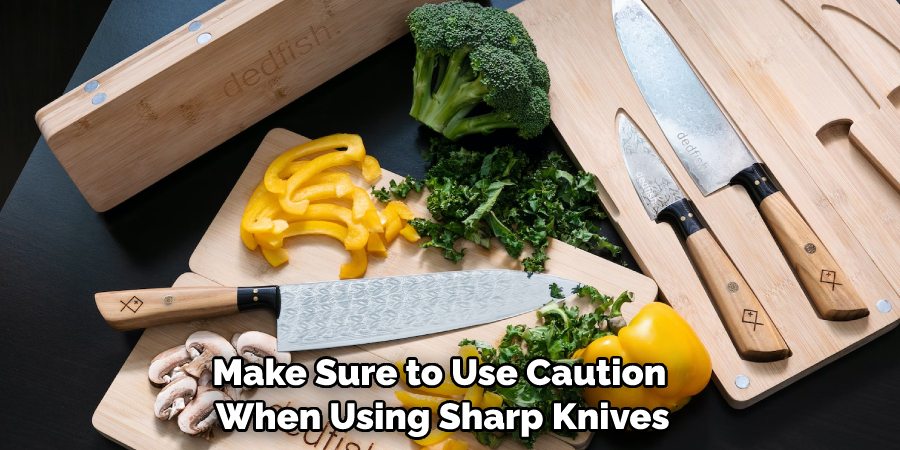
By following these tips, you can keep your cutting board looking like new for years to come.The chopping board is an integral part of food preparation, and a warped cutting board can be a hazard. Fortunately, there are ways to fix a warped cutting board so that it is safe and functional once again.
With the right tools, patience, and knowledge, you can fix your warped cutting board and prevent it from warping again. Remember to make sure that the board is completely dry before storing and always store it away from sources of moisture or water. Additionally, periodically apply a food-grade finish in order to seal the board and protect it from future warping. By taking these precautions, you can have a warped-free cutting board for years to come.
Professional Focus
Angela Ervin, a former interior designer turned blogger, specializes in kitchen design and renovations. Through her website, she blends her passion for cooking with design expertise, sharing practical and creative ideas. Known for balancing functionality and beauty, Angela’s insightful content has made her a trusted voice in home design and lifestyle.
About the Author
Angela Ervin, an experienced interior designer and blogger, combines her passion for kitchen renovations with storytelling. Living in Petersburg with her family, she enjoys cooking and testing her projects firsthand. Known for her humor and relatable style, Angela shares creative, functional design insights through her content, making her a trusted voice in home design.
Education History
University: Virginia Commonwealth University
Degree: Bachelor of Fine Arts (BFA) in Interior Design
- Angela’s education at VCU focused on mastering core interior design principles, including spatial planning, color theory, materials selection, and sustainable design practices.
- She gained hands-on experience through studio projects and collaborative design exercises, which honed her ability to create functional and aesthetically pleasing environments.
- Her coursework also emphasized problem-solving and practical applications of design, preparing her for real-world projects like her self-directed kitchen renovations.
- The program’s strong foundation in both technical skills and creative expression shaped Angela’s ability to seamlessly integrate form and function in her work.


